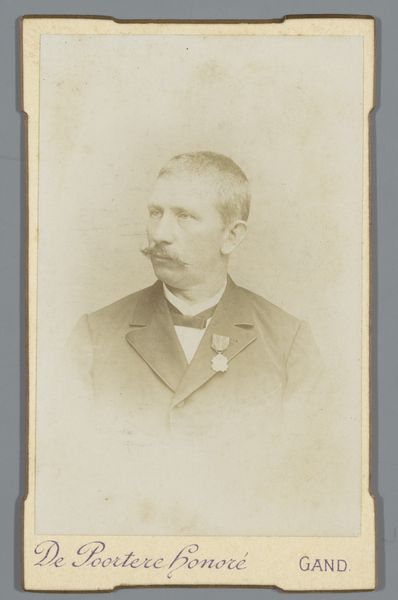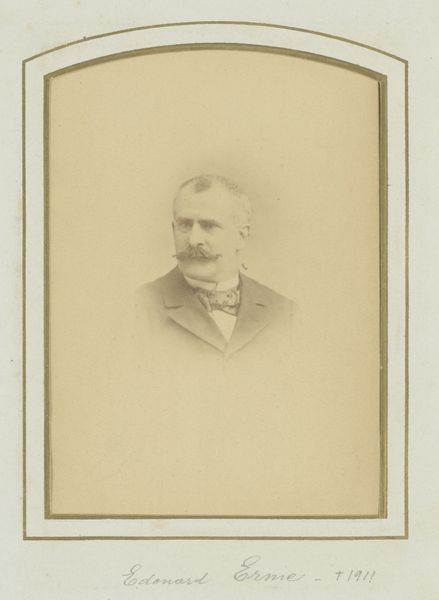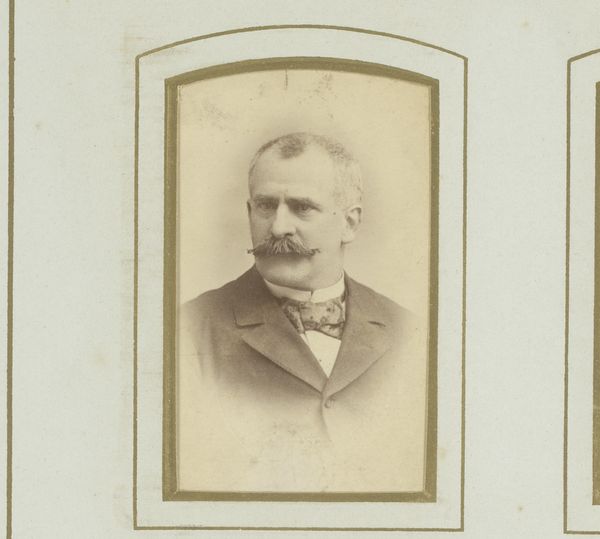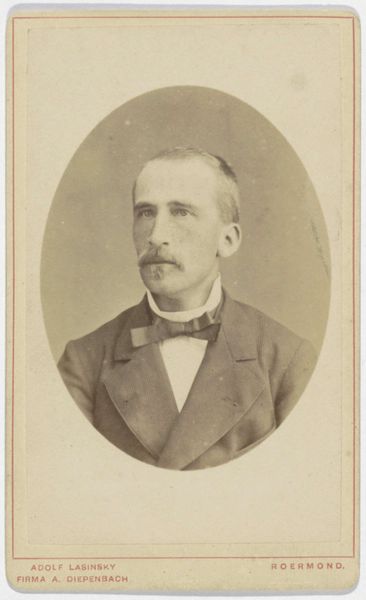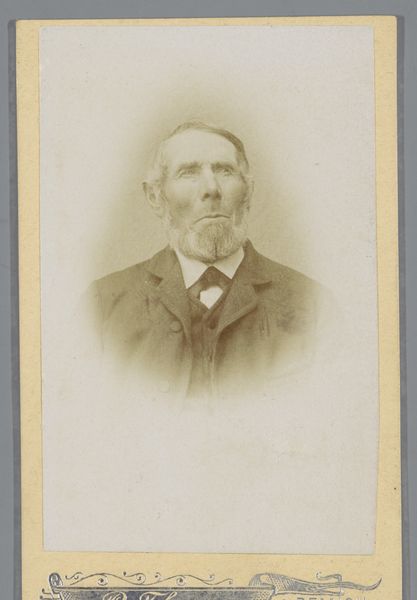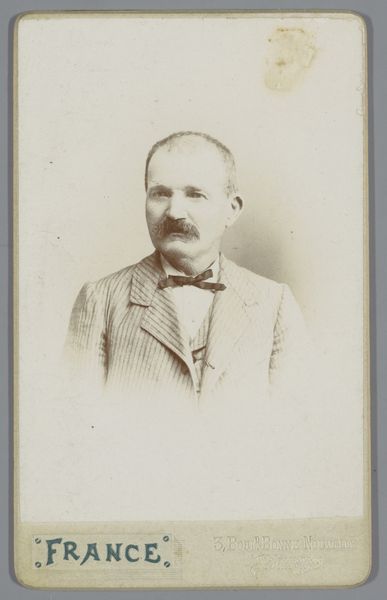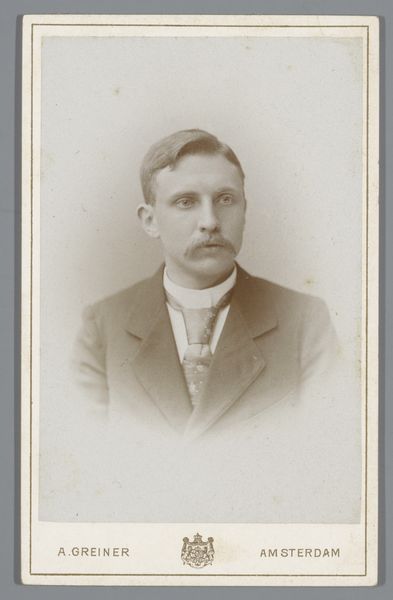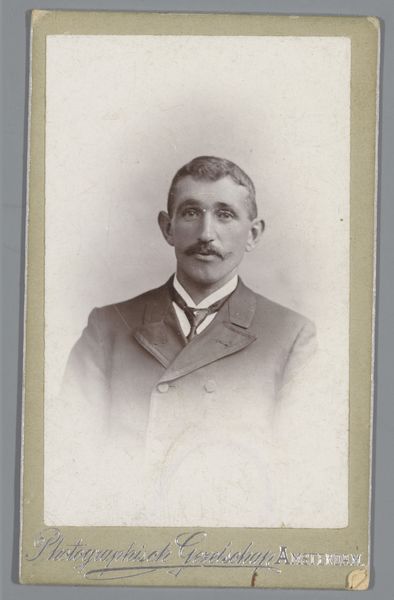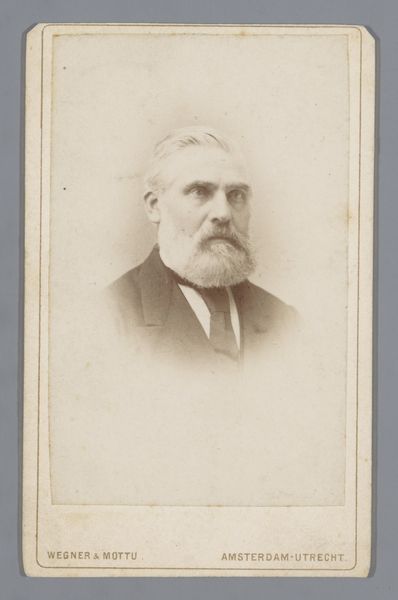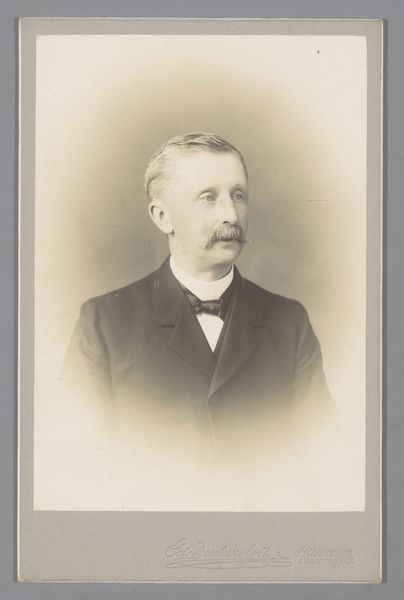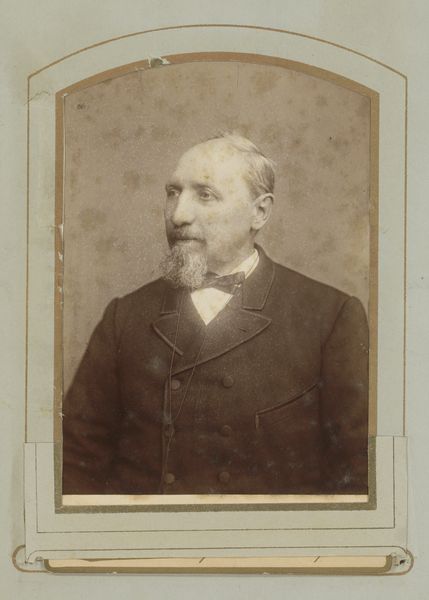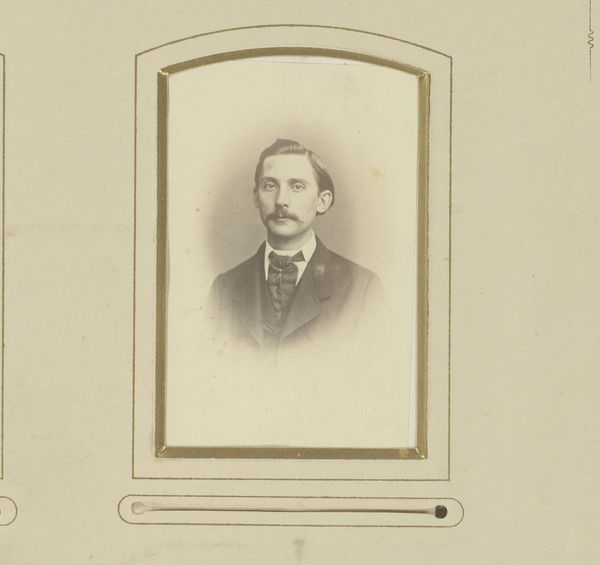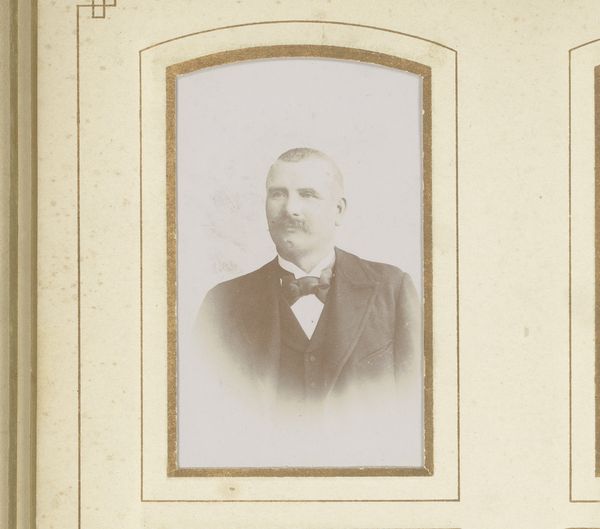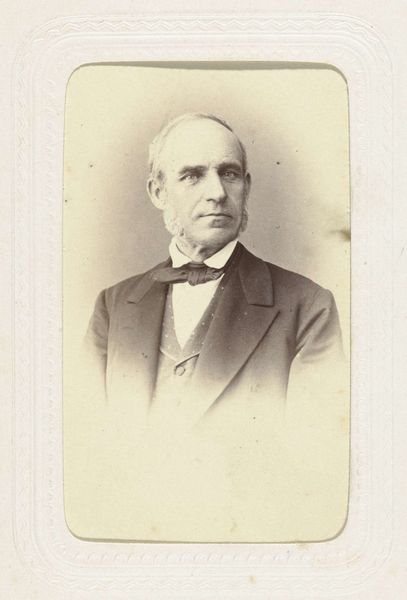
photography
#
portrait
#
photography
#
realism
Dimensions: height 105 mm, width 63 mm
Copyright: Rijks Museum: Open Domain
Curator: Before us we have a photograph titled "Portret van een onbekende man," attributed to the studio of Gillard & Delvaux and likely created between 1903 and 1906. The photographic technique and sepia tone lend a distinct aesthetic to it. Editor: My first thought? An era defined by posed stoicism. Look at the rigid posture and the intensity in his eyes. It seems like he's consciously performing a role, carefully constructing a representation of himself for posterity, reflecting an assertion of class. Curator: Indeed, studio photography in that era was about presenting a constructed identity. But I also see the image as a container of cultural memory. The moustache, the bow tie, the faint suggestion of an award pin... these are all symbolic markers that communicate something about his time. Each object carrying information for cultural decoding. Editor: And for whom? A photograph made in this style suggests this image's function was less personal and more tied to public life. Who was he trying to impress with such formal representation? He almost radiates the societal pressures that come with being a man in the early 20th century, doesn’t he? I mean this wasn’t a spontaneous snap; this was likely an intentional effort towards upward mobility or professional self-promotion. Curator: He certainly seems like someone keen to participate in societal and institutional power dynamics. Editor: Which leaves me with the lingering question: whose stories are left out from these deliberately crafted images? Who did this style of portraiture exclude? Whose visages are conspicuously absent, and why? The visual language speaks volumes, not just about the subject in front of the camera, but those it consciously disregards. Curator: Well, beyond its potential for social commentary, I find myself appreciating the image as a document of an individual’s desire to leave his mark, literally, and how cultural identity leaves imprints across generations. Editor: It certainly provides much food for thought—offering a brief but fascinating glimpse into the complexities of both individual aspiration and wider socio-political climates during a crucial historical moment.
Comments
No comments
Be the first to comment and join the conversation on the ultimate creative platform.
